As Ukraine and US Still Negotiate Monitoring Mechanisms, Russia Extracts Concessions from the West While Intensifying Drone Attacks Against Civilian Areas
Summary of the Day — March 29, 2025
The terms of the ceasefires on Black Sea operations and energy infrastructure strikes remain ambiguous as Ukrainian and U.S. officials continue negotiations on the specifics, while Russia exploits the diplomatic process to extract concessions from the West. European allies have strengthened their support for Ukraine with expanded intelligence sharing and materiel aid, even as Russian forces reportedly prepare for intensified spring and summer offensive operations to maximize leverage in ongoing negotiations. The humanitarian toll continues to mount, with recent Russian attacks targeting Dnipro, Kryvyi Rih, and Kharkiv, killing at least ten civilians and injuring dozens more. Meanwhile, President Zelensky has ordered a comprehensive aviation reform to strengthen Ukraine’s air capabilities, appointing new leadership to establish a new aviation chain of command within the Ukrainian General Staff.
 Emergency teams speak to residents following Russian drone strikes on residential areas in Kharkiv. (State Emergency Service of Ukraine / Anadolu via Getty Images)
Emergency teams speak to residents following Russian drone strikes on residential areas in Kharkiv. (State Emergency Service of Ukraine / Anadolu via Getty Images)
Ceasefire Conditions Remain Unclear: Negotiations Continue on Monitoring
The exact terms of the ceasefires on energy infrastructure strikes and Black Sea operations remain shrouded in ambiguity, creating fertile ground for mutual accusations of violations. Ukraine’s Ministry of Energy reported on March 26 that Ukraine and the United States agreed on a list of energy facilities that Russia must stop striking, but that the U.S.-Ukraine list conflicts with Russia’s demands. The Ministry stated that Russia’s list does not prohibit strikes on Ukrainian oil and gas facilities—the most frequently targeted energy infrastructure—although the Kremlin reported that the ceasefire protects Russian oil and gas facilities from Ukrainian strikes.
President Volodymyr Zelensky reported on March 28 that Ukrainian Defense Minister Rustem Umerov will present U.S. officials with evidence of Russian ceasefire violations during Umerov’s upcoming trip to the United States. The lack of a formal trilateral statement or agreement on the exact terms has created a situation where all sides appear to operate under different assumptions about what is covered under the ceasefire.
Regarding potential monitors of the Black Sea moratorium, Zelensky stated that Turkey, Bulgaria, the United Kingdom, the United States, France, Romania, and Bulgaria could act as potential ceasefire monitors, but stated that all sides “will” hold internal and international consultations regarding “readiness” to conduct monitoring. Despite the absence of a formal agreement, U.S. Vice President JD Vance stated on March 28 that the United States and Ukraine have “obviously” achieved an energy infrastructure ceasefire and were “almost done” negotiating a maritime ceasefire.
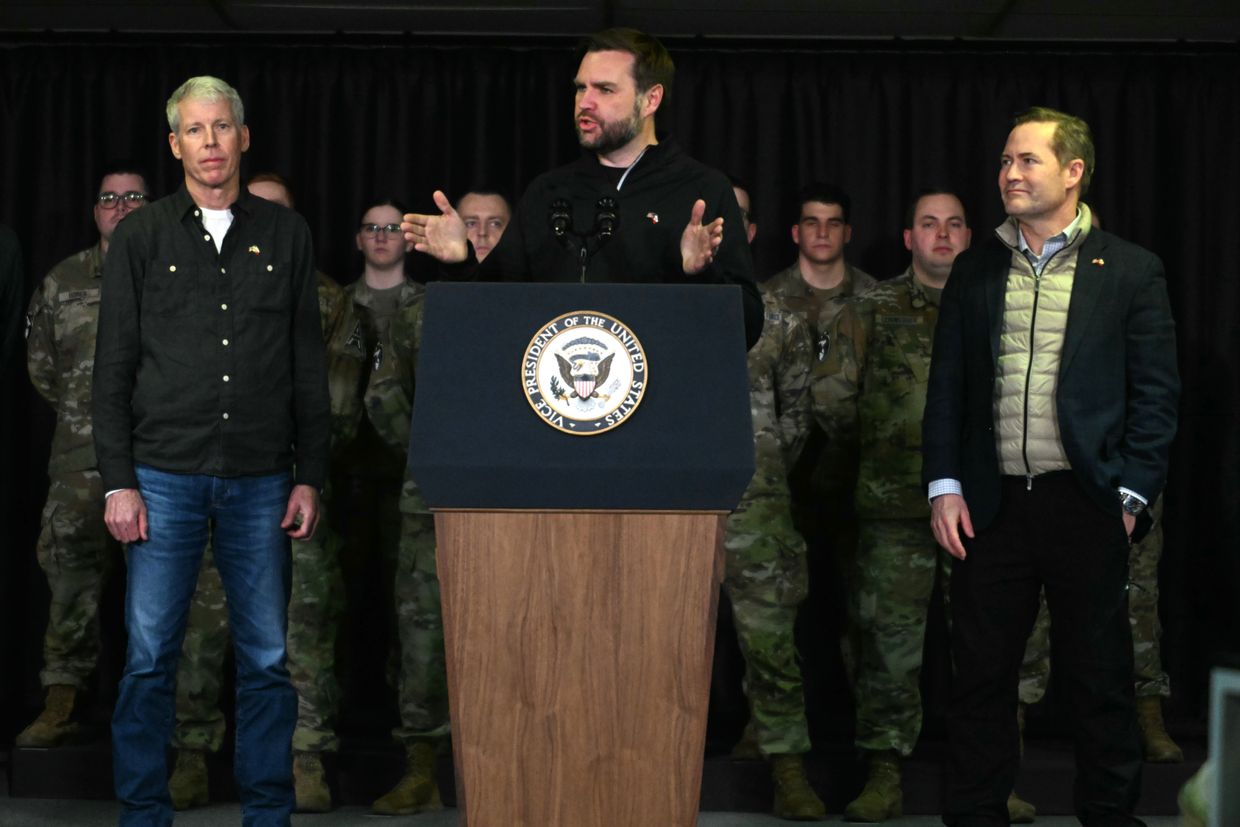 U.S. Vice President JD Vance (C), with Secretary of Energy Chris Wright (L) and National Security Advisor Mike Waltz (R), speaks at the US military’s Pituffik Space Base, in Pituffik, Greenland. (Jim Watson – Pool / Getty Images)
U.S. Vice President JD Vance (C), with Secretary of Energy Chris Wright (L) and National Security Advisor Mike Waltz (R), speaks at the US military’s Pituffik Space Base, in Pituffik, Greenland. (Jim Watson – Pool / Getty Images)
Russia’s Sanctions Relief Demands: Testing Western Resolve
The Kremlin appears to be using the Black Sea ceasefire negotiations with the United States to test the extent to which Russia can extract concessions from the West, as the implementation of a maritime truce would not necessarily require any sanctions relief. Bloomberg reported on March 28 that Russia is demanding the European Union reconnect the Russian Agricultural Bank (Rosselkhozbank), one of Russia’s largest banks, to the SWIFT international banking system as a precondition to implementing a Black Sea truce with Ukraine.
Unspecified sources close to the Kremlin said Russia is gauging what it can secure from the Trump Administration regarding sanctions in the negotiation processes and is viewing initial success on a Russian reconnection to SWIFT as a precursor to achieving broader sanctions relief in the future. Russia appears to be exploiting the ceasefire negotiations process to extract concessions from the West, possibly as a tactic to gain leverage for future negotiations and improve its economic situation after three years of diplomatic and economic isolation.
It’s worth noting that Russia, the United States, and Ukraine could implement a Black Sea truce without sanctions relief—as Russia, Ukraine, and Turkey did during the Black Sea Grain Initiative in 2022 and 2023. European leaders advised European countries on March 27 to refrain from lifting any sanctions against Russia as Russia continues to occupy and wage war against Ukraine.
European Support Expands: Intelligence Sharing and Military Aid
European allies continue to provide substantial financial and materiel support to Ukraine and have agreed to expand intelligence sharing with Kyiv. President Zelensky announced on March 28 that European countries agreed at the “Coalition of the Willing” summit in Paris on March 27 to expand Ukraine’s access to European intelligence, relevant technologies, and satellites. Additionally, several unspecified European countries agreed to grant Ukraine an unspecified degree of access to their ammunition stockpiles.
Zelensky noted that Ukraine also agreed with unspecified partners on air defense production licenses, investments in Ukraine’s production of drones and missiles, and to continue to work toward artillery licensing. French President Emmanuel Macron pledged on March 26 to provide Ukraine with an additional military aid package valued at 2 billion euros (roughly $2.1 billion) that will include anti-tank missiles, surface-to-air missiles, air defense missiles, armored vehicles, drones, and additional Mirage fighter jets.
Other European nations are also stepping up: Sweden instructed its armed forces on March 28 to allocate a total of 80 million Swedish Kronor (roughly $7.5 million) to Ukraine’s Demining and Drone coalitions. The Danish Ministry of Defense announced on March 27 that Denmark pledged an additional 300 million Danish Kroner (roughly $43.5 million) to a Ukrainian innovation fund that will focus on, among other things, further developing electronic warfare and drone capabilities.
Russian Offensive Preparations: Spring Push Expected
Russian forces are reportedly poised to intensify offensive operations in several areas of the frontline in Spring and Summer 2025 in hopes of influencing ongoing ceasefire and peace negotiations. The Associated Press, citing Ukrainian officials, reported on March 29 that Russian forces are preparing to launch a new offensive operation in an unspecified sector of the frontline in the coming weeks to maximize pressure on Ukraine and increase Russia’s leverage in ongoing ceasefire negotiations.
Two diplomats from the Group of Seven countries told AP that they agree with Zelensky’s recent warnings that Russia is preparing for intensified ground operations in Sumy, Kharkiv, and Zaporizhia oblasts. Two Ukrainian commanders stated that Russian forces have recently intensified reconnaissance missions along the frontline and offensive operations in the Pokrovsk direction. Ukraine’s Khortytsia Group of Forces Spokesperson Major Viktor Trehubov told AP that Russian forces have “recovered” after conducting a temporary operational pause in the Pokrovsk direction in early March 2025.
Recent observations show intensified Russian offensive operations in the Lyman, Pokrovsk, and Orikhiv directions, as well as ongoing operations in northern Sumy Oblast aimed at pushing Ukrainian forces from remaining positions in Kursk Oblast. Russian forces have at minimum advanced within three kilometers of the Donetsk-Dnipropetrovsk Oblast administrative boundary in two areas of the Pokrovsk direction, and the Kremlin will likely leverage future Russian advances into southeasternmost Dnipropetrovsk Oblast to sow chaos within the information space.
Advanced Drone Tactics: Russia Alters Strike Approach
Russian forces are reportedly employing more advanced long-range drones, complicating Ukrainian air defense operations and allowing more drones to penetrate Ukraine’s air defense umbrella. German outlet BILD reported on March 28 that Russia has intensified and adjusted its use of long-range strike drones, making it increasingly difficult for Ukrainian forces to intercept them.
BILD noted that more Russian drones have recently been successfully breaching the Ukrainian air defense umbrella and that Russian forces have altered their tactics. They are now having drones loiter several kilometers from their targets at high altitudes before conducting synchronized strikes with multiple drones. Ukrainian officials have yet to comment on any changes in Russian strike tactics.
The Ukrainian Air Force reported on March 29 that Russian forces launched 172 Shahed and other strike and decoy drones from several directions overnight on March 28 to 29. Ukrainian forces downed 94 drones while 69 decoy drones became “lost,” likely due to Ukrainian electronic warfare interference. Kharkiv Oblast officials reported that Russian Shahed drones struck the Zolochiv Hospital and damaged a power grid in Zolochiv. Ukrainian officials also reported that Russian strikes hit infrastructure and other objects in Sumy, Poltava, Dnipropetrovsk, Odesa, Mykolaiv, and Zaporizhia oblasts.
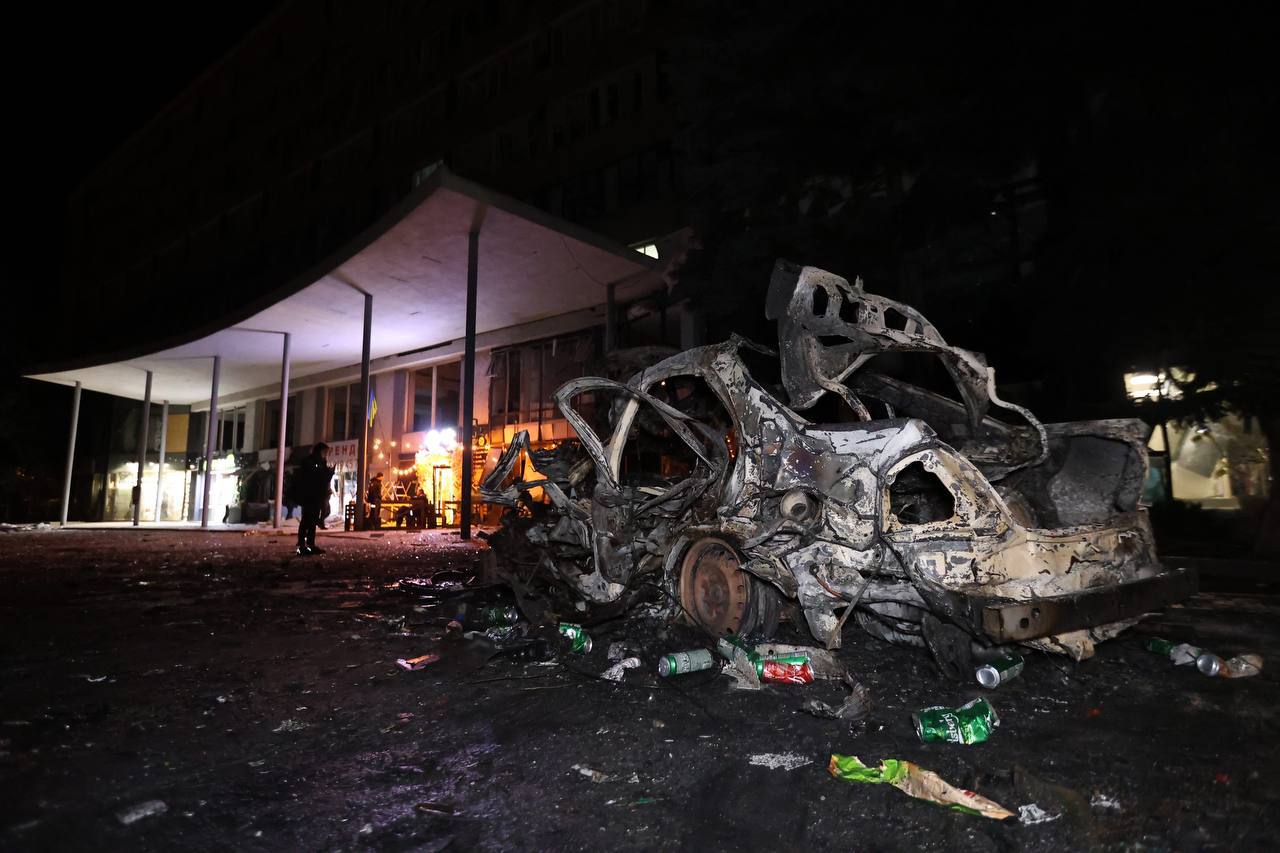 A charred vehicle sits near an attack site following a mass Russian drone strike against the city of Kharkiv. (Oleh Syniehubov / Telegram)
A charred vehicle sits near an attack site following a mass Russian drone strike against the city of Kharkiv. (Oleh Syniehubov / Telegram)
Devastating Civilian Strikes: Multiple Cities Under Attack
Russia continues to target civilian infrastructure in Ukraine amid these shifts in strike tactics. A Russian drone attack on March 28 killed four people and injured at least 21 in the city of Dnipro, sparking a large fire at a hotel and restaurant complex as well as 11 private residences. Several high-rises were damaged in the strike, requiring over 150 emergency workers and 40 units to respond to the incidents.
On March 29, a Russian missile attack against the city of Kryvyi Rih in Dnipropetrovsk Oblast injured at least eight people, with damage to high-rise buildings, houses, a school, cars, and a car wash. The city’s military administration head, Oleksandr Vilkul, reported that Moscow deployed a ballistic missile in the attack on Zelensky’s hometown.
Later that same day, late in the evening of March 29, a Russian drone attack killed two civilians and injured at least 25 people in Kharkiv, according to Governor Oleh Syniehubov. A 67-year-old man and a 70-year-old woman were killed, while the injured included five children between the ages of 5 and 17. The strikes damaged a shopping center, several residential buildings, a medical facility, and an office building, sparking several fires across the city.
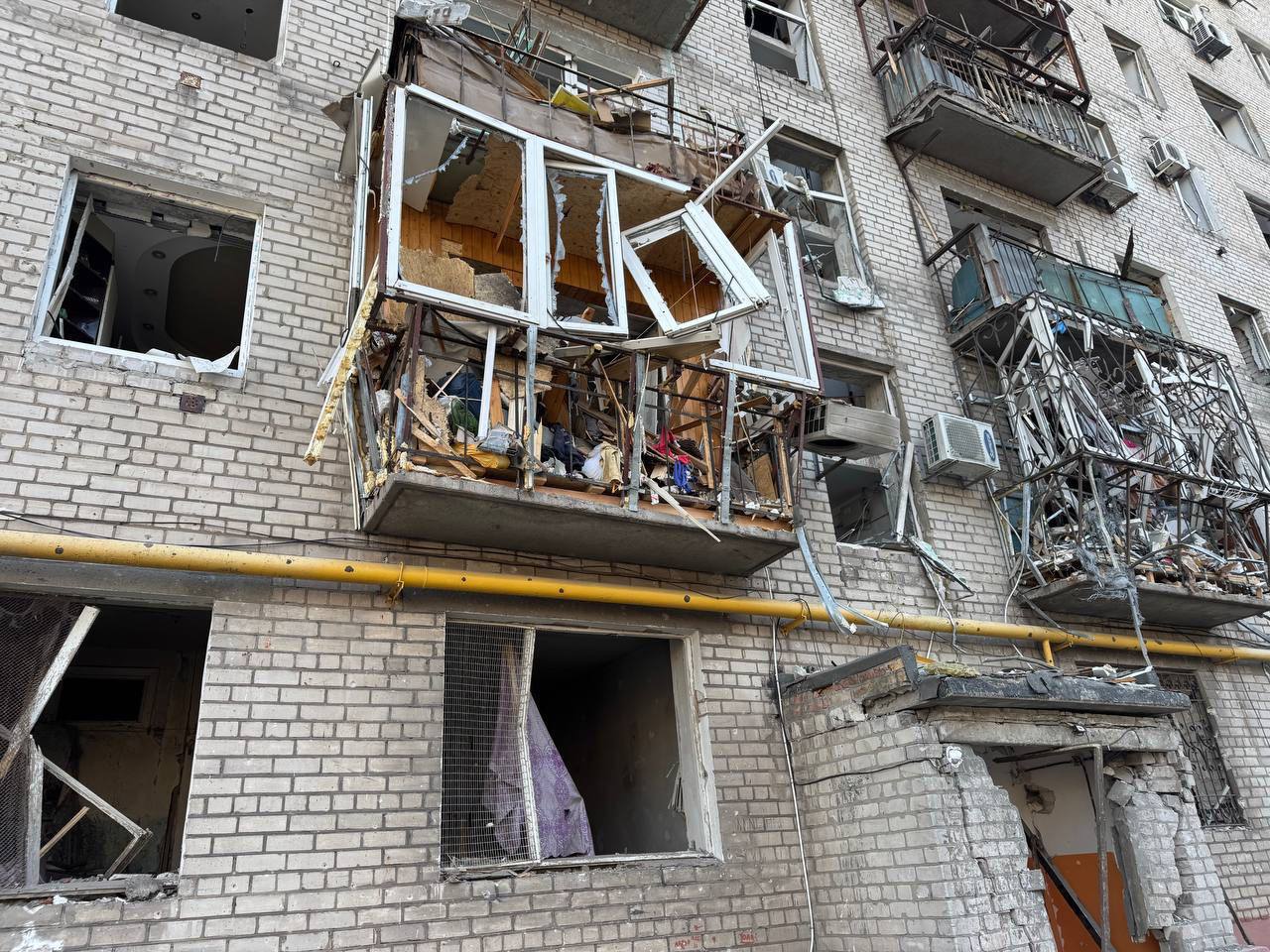 The aftermath of a Russian attack against Dnipro, Ukraine. Photo published. (Governor Serhii Lysak/Telegram)
The aftermath of a Russian attack against Dnipro, Ukraine. Photo published. (Governor Serhii Lysak/Telegram)
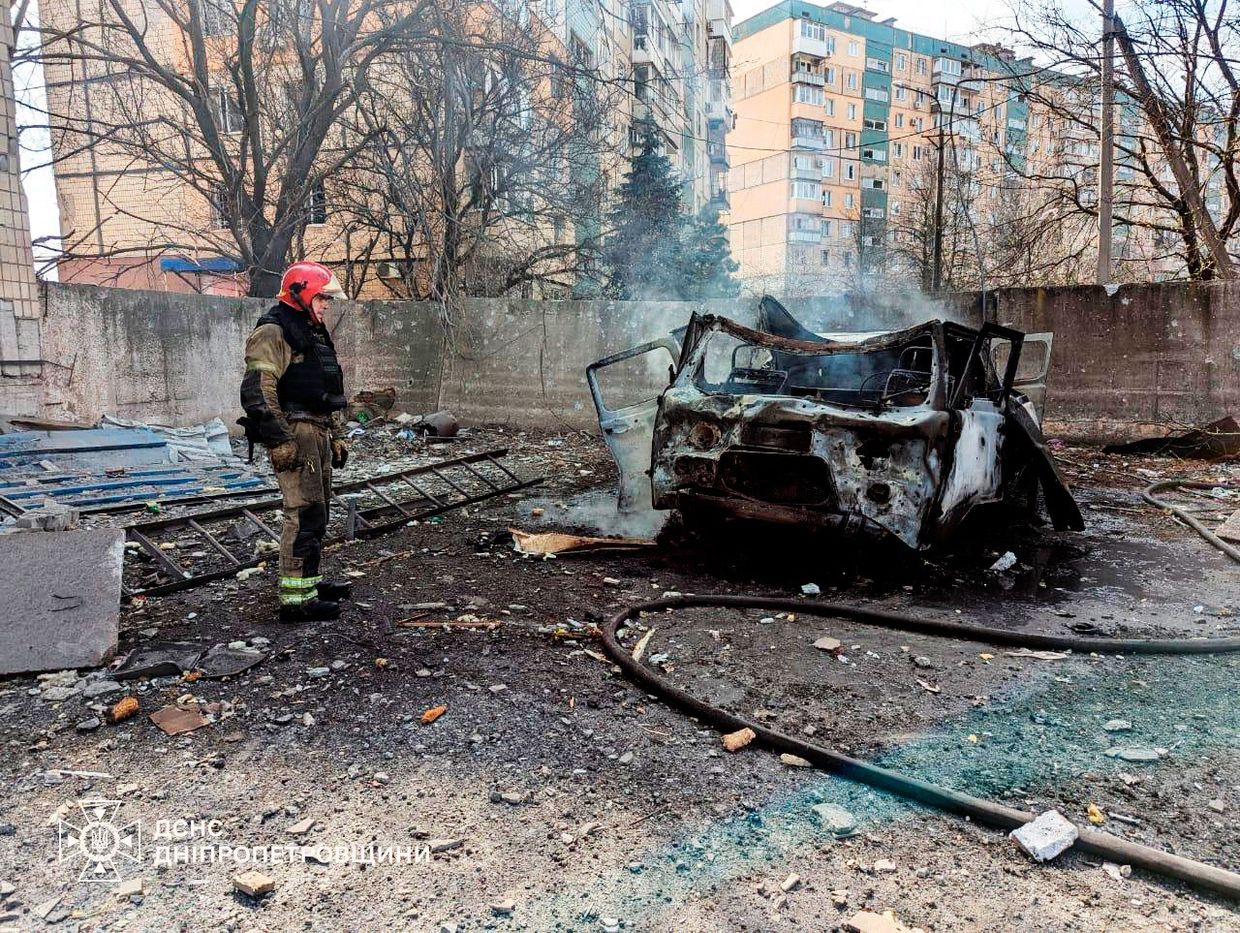 The aftermath of a Russian missile strike against Kryvyi Rih, Dnipropetrovsk Oblast, Ukrainе. (State Emergency Service/Telegram)
The aftermath of a Russian missile strike against Kryvyi Rih, Dnipropetrovsk Oblast, Ukrainе. (State Emergency Service/Telegram)
Ukrainian Aviation Reform: New Chain of Command
President Zelensky has ordered Ukraine’s Ministry of Defense and General Staff to establish a new aviation chain of command within the Ukrainian General Staff and conduct widespread aviation management reform to strengthen Ukraine’s air capabilities. Defense Minister Rustem Umerov announced on March 28 that Ukraine’s MoD and General Staff initiated a large-scale reform of aviation management with the aim of optimizing the development of Ukraine’s air capabilities.
Zelensky appointed Oleksandr Kozenko as Deputy Defense Minister for Aviation tasked with heading the new effort, noting that Kozenko has been involved in integrating the F-16 and Mirage aircraft into the Ukrainian Air Force. The president also appointed Major General Oleksiy Marchenko as Deputy Chief of the General Staff for Combat Aviation, Brigadier General Serhiy Holubtsov as Deputy Commander of the Air Force, and Colonel Oleksandr Dyakiv as Commander of Aviation and Deputy Commander of the Air Force.
This reorganization comes as Ukraine works to better coordinate its aerial assets, particularly as Western aircraft like F-16s and Mirage jets are integrated into its forces. Ukrainian officials have not elaborated on the structure of the new chain of command or how it may impact interaction between Ukrainian air and ground forces in joint operations.
Battlefield Developments: Advances on Multiple Fronts
Recent days have seen territorial shifts for both Ukrainian and Russian forces across multiple sectors of the front. Ukrainian forces recently advanced in Belgorod Oblast and near Pokrovsk, while Russian forces made gains near Kupyansk, Toretsk, and other locations in the Pokrovsk direction.
Geolocated footage published on March 29 indicates that Ukrainian forces recently advanced in eastern Popovka in northwestern Belgorod Oblast along the international border. In the Pokrovsk direction, geolocated footage published on March 28 shows that Ukrainian forces recently advanced west of Shevchenko, south of Pokrovsk.
Meanwhile, Russian forces have made their own gains. Footage indicates they advanced north of Stepova Novoselivka east of Kupyansk, in the western outskirts of Toretsk, west of Toretsk, and north of Druzhba immediately northeast of Toretsk. In the Pokrovsk direction, Russian forces advanced southwest of Kotlyarivka and east of Bohdanivka, seizing Preobrazhenka.
The Russian Ministry of Defense also claimed to have captured Veselivka, a village in Ukraine’s Sumy Oblast at the border with Russia, though Ukrainian military sources have not confirmed this claim. The village, with a pre-war population of over 60 people, lies just across the border with Russia’s Kursk Oblast, where fighting continues despite recent rapid advances by Russian forces.
Naftogaz Strikes: Energy Infrastructure Under Attack
Despite claims of adhering to the energy infrastructure ceasefire, Russian forces have reportedly continued to target Ukrainian energy facilities. Ukrainian state oil and gas operator Naftogaz reported on March 28 that Russian forces struck its facilities overnight, marking the eighteenth combined attack on the Group’s infrastructure since the start of the full-scale war and the eighth since the beginning of this year.
“The enemy shelled Naftogaz Group’s facilities. This is the eighteenth combined attack on the Group’s infrastructure since the start of the full-scale war and the eighth since the beginning of this year,” the company said in a statement. Naftogaz stated there were no casualties but that “gas production facilities were damaged” in the overnight Russian attacks, without specifying where the hit sites were located.
The attacks occurred despite Russian claims that a 30-day truce on energy infrastructure has been in effect since March 18, following a phone call between Russian President Vladimir Putin and U.S. President Donald Trump. Kremlin spokesperson Dmitry Peskov claimed Russia adheres to the energy ceasefire but “reserves the right” to abandon it in case of violations on Ukraine’s side, pointing to alleged Ukrainian attacks on the Sudzha gas metering station—accusations Kyiv has rejected.
Repatriating the Fallen: Over 900 Ukrainian Soldiers Returned
Ukraine has repatriated the bodies of 909 soldiers who died fighting against Russia’s full-scale invasion, the Coordination Headquarters for the Treatment of the Prisoners of War reported on March 28. These were soldiers who fought in the Kurakhove, Pokrovsk, Bakhmut, Vuhledar, Luhansk, and Zaporizhzhia directions, with some bodies returned from Russian Federation morgues.
The effort to retrieve the fallen soldiers was conducted in collaboration with several government and military agencies, including the Security Service of Ukraine, the Interior Ministry, the State Emergency Service, the Armed Forces, the Ukrainian Parliament Commissioner for Human Rights, and the Office for Missing Persons in Special Circumstances. The headquarters also thanked the International Committee of the Red Cross for their assistance.
This represents the largest such repatriation since the beginning of the full-scale invasion. The Geneva Conventions dictate that people who lose their lives during war are entitled to a dignified burial, and such exchanges are among the few areas of cooperation between Moscow and Kyiv during the conflict.
International Financial Support: IMF Approves $400 Million
The Executive Board of the International Monetary Fund (IMF) approved the disbursement of $400 million in funds for Ukraine via the Extended Fund Facility (EFF), the IMF announced on March 28. The funds represent the latest tranche of the EFF program, which will provide Kyiv with $15.6 billion in budget support over four years. With the additional $400 million in funding, the program has now distributed $10.1 billion in financing to Ukraine.
“Russia’s war in Ukraine continues to take a devastating social and economic toll on Ukraine,” IMF Managing Director Kristalina Georgieva said in a press statement. “(Ukraine’s) economy has remained resilient, but the recent growth slowdown is expected to persist in 2025 due to headwinds from energy needs and a tight labor market. Contingency planning is key to enable appropriate policy action should risks materialize.”
Commenting on Ukraine’s monetary policy, the managing director urged Ukraine’s National Bank to “stand ready for further action” should inflation expectations deteriorate. Funds from the EFF are intended to help stabilize Ukraine, support the country’s postwar recovery, and promote economic growth as Kyiv moves forward on its path to EU membership.
Minerals Deal Concerns: Ukraine Seeks Revisions
Amid ongoing negotiations for a minerals deal between Ukraine and the United States, President Zelensky has expressed concerns that the agreement could potentially interfere with Ukraine’s path to EU membership. “The Constitution of Ukraine makes it clear that our course is towards the EU,” Zelensky told reporters on March 28. “Nothing that could threaten Ukraine’s accession to the EU can be accepted.”
According to Bloomberg, Ukraine will ask for changes to be made in the new minerals deal presented by the U.S., seeking more investment commitments and clarification on how a proposed reconstruction fund would operate. A draft proposal reportedly grants the U.S. power over all future mineral and major infrastructure investments in Ukraine without a time limit, while also giving the U.S. priority access and control over a joint reconstruction fund.
Ukrainian officials have been alarmed that the draft agreement regards “material and financial benefits” given to Ukraine since the onset of Russia’s full-scale war in February 2022 as U.S. contributions to the reconstruction fund, potentially requiring Ukraine to repay all economic aid it has received. U.S. Treasury Secretary Scott Bessent said on March 26 that the U.S. has finalized a new minerals deal to sign with Ukraine, but the details and timeline remain uncertain following a heated argument during Zelensky’s February White House visit.
Ukrainian Military Innovation: Drone Production Capacity
Ukrainian manufacturers have the capacity to produce over 5 million first-person-view (FPV) drones per year, according to presidential advisor Alexander Kamyshin. “Now, one manufacturer can produce 4,000 such FPV drones per day,” said Kamyshin, who previously served as the strategic industries minister. “And that is just one manufacturer. There are more than 150 manufacturers in our country. Our capacity is to produce over 5 million FPV units per year.”
Kamyshin said the lack of funding prevents Ukraine from producing drones at its full capacity. Last year, only 2 million drones were produced, he noted. Meanwhile, Ukraine’s Defense Ministry approved the domestically produced “Bird of Prey” unmanned aviation system for combat operations on March 26. The system was developed based on battlefield experience, optimizing its effectiveness against enemy vehicles and fortified positions.
The drones are equipped with payloads capable of striking heavy equipment such as tanks, armored personnel carriers, and self-propelled artillery, as well as fortified dugouts. “The Bird of Prey has already proven its effectiveness in destroying enemy armored vehicles and fortified firing positions,” the ministry stated. Kyiv’s drone fleet is being reinforced by the international drone coalition, which recently allocated 20 million euros ($21.6 million) to procure tactical-level reconnaissance drones that will be delivered to Ukraine within three months.
Diplomatic Maneuvers: Trump-Stubb Meeting and Arctic Strategies
Finnish President Alexander Stubb spoke with U.S. President Donald Trump about the war in Ukraine and other policy matters during an “unofficial” visit to Trump’s Mar-a-Lago residence in Florida on March 29. The visit involved breakfast, lunch, and a round of golf, with the leaders discussing “relations between Finland and the United States, and current foreign and security policy issues, including Ukraine,” according to a Finnish government press release.
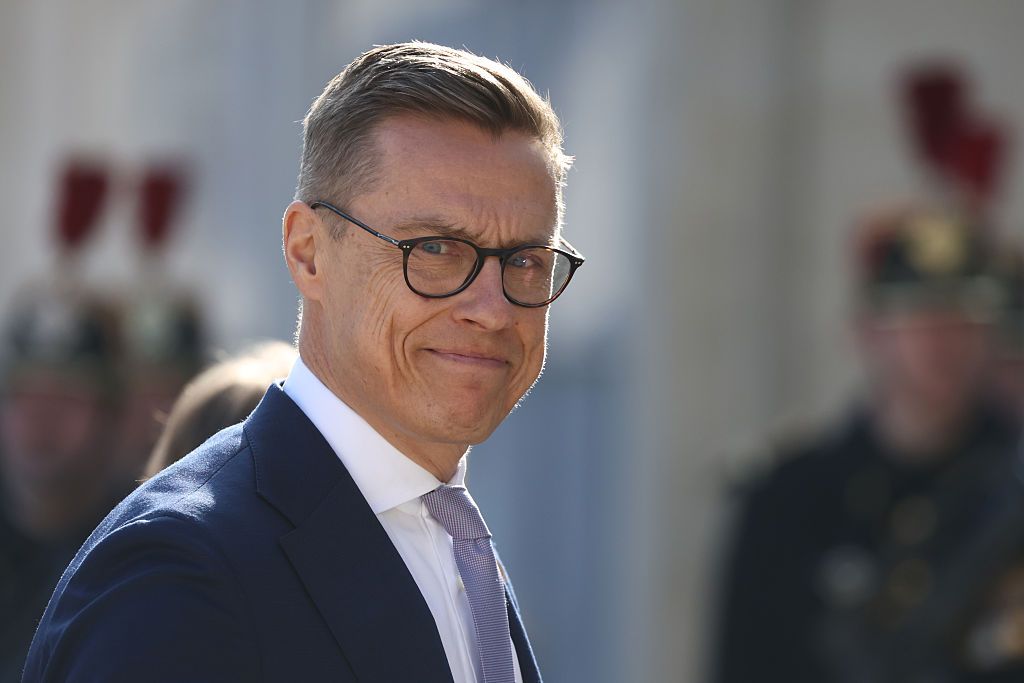 Finnish President Alexander Stubb in Paris, France. (Tom Nicholson/Getty Images)
Finnish President Alexander Stubb in Paris, France. (Tom Nicholson/Getty Images)
Following his meeting with Stubb, Trump announced that the U.S. would purchase Finnish icebreaker vessels. “President Stubb and I look forward to strengthening the partnership between the United States and Finland,” Trump wrote on social media. “That includes the purchase and development of a large number of badly needed icebreakers for the U.S.”
The icebreakers are critical to Trump’s plans to expand U.S. power over the Arctic. Trump reiterated his ambitions regarding Greenland, a Danish territory, in an interview with NBC News on March 29, saying “We’ll get Greenland. Yeah, 100%.” He mentioned there was a “good possibility that we could do it without military force,” but refused to rule out a military takeover, stating “I don’t take anything off the table.”
Looking Ahead: Peace Prospects and Strategic Implications
As the war enters its fourth year with no clear path to resolution, multiple parallel processes are unfolding that will shape its trajectory. The partial ceasefires on energy infrastructure and Black Sea operations represent tentative first steps toward de-escalation, but their unclear terms and frequent violations highlight the challenges ahead for broader peace efforts.
The strategic landscape continues to evolve, with Ukraine receiving expanded European intelligence sharing and materiel support even as Russian forces prepare for intensified offensive operations. The U.S.-brokered negotiations have yielded limited progress thus far, while Russia’s demands for sanctions relief as a precondition for ceasefire implementation suggest Moscow is testing how much it can extract from the West.
For Ukrainian civilians, particularly in cities like Dnipro, Kryvyi Rih, and Kharkiv, the war’s brutal reality continues regardless of diplomatic developments, with deadly drone and missile strikes targeting residential areas. As foreign ministers meet, leaders negotiate, and military commands strategize, the human toll of this conflict continues to mount—a stark reminder of what’s at stake in the ongoing peace efforts.
